This site uses affiliate links, meaning that if you make a purchase through our links, we may earn an affiliate commission.
Welcome to the journey from Cusco to Moray, a captivating archaeological site nestled in the heart of Peru.
As you venture from the historic city of Cusco, prepare to immerse yourself in the mysteries of Moray’s circular terraces. This remarkable destination offers a unique window into the ingenuity of the ancient Incas and their agricultural prowess.
Join us as we embark on a fascinating exploration of Moray, unraveling the secrets held within its concentric rings and delving into the rich history and natural beauty that await us. From innovative agricultural practices to awe-inspiring engineering marvels, get ready to discover 4 extraordinary wonders that make Moray a truly unforgettable destination.
GOOD TO KNOW: If you are starting your Peru adventure in Lima, then make sure to read 22 Expert Lima Tips for First-Time Visitors (Unlock Lima’s Treasures)
Cusco to Moray: Exploring Transportation Options
GOOD TO KNOW: Moray Archaeological Site is located about 50 km (31 mi) northwest of Cusco on a high plateau at about 3500 m (11,500 ft) just west of the village of Maras. It may take about 1.5 – 2 hours one way to get there from Cusco.
Here is how to navigate the routes and make your journey from Cusco to the Moray a seamless and memorable experience:
- Private Car or Taxi
From personal experience getting a private driver or hiring a taxi is the most convenient option that provides total flexibility allowing you to customize your itinerary and explore the region at your own pace.
If you are staying in one of the hotels in Cusco, I am sure that your hotel will be more than happy to arrange for you a driver and even a guide. Needless to say, this is an expensive option, but it is all worth it.
- Guided Tour
Joining a guided tour not only simplifies the logistics but also provides valuable insights and expertise.
The Ultimate Sacred Valley tour: 1 day of Inca history, lifestyle, landscapes – this is a small group tour that covers Maras, Moray and Ollantaytambo, and Pisac. Guide, transportation, and lunch are all included.
- By Colectivo
There is a colectivo station on Avenida Grau in Cusco. First of all, find the colectivo that goes to Urubamba. Second, let the driver know that you will want to get off at the town of Maras. It will take you about 45 minutes to reach Maras. Now, something to keep in mind is that colectivo do not leave until they are full, but usually, they fill up very fast so it should not take long at all for you to be on your way to Maras.
Get off at Maras stop. Finally, hire a taxi to take you to Moray. It will be about a 30-minute drive to get to Moray from the town of Maras.
5 Fascinating Discoveries at the Enigmatic Circular Terraces
Moray is an Inca engineering wonder! It has captivated and puzzled researchers and travelers since it was first photographed during an aerial survey of the Sacred Valley by the American geologist Robert Shippee in 1931.
- Shippee’s photographs revealed the striking concentric stone rings descending into a concave hollow in the ground. The images resembled an ancient Greek Amphitheater.
- Throughout the years many explorers have analyzed and studied the site and have come up with a variety of theories.
- Then, in the 1970’s an Australian physicist John Earls recorded a drastic temperature stratification in the rings, ranging as much as 15 C between the hottest and coldest ring.
- Furthermore, John Earls speculated that the site might be an open-air agricultural research station. He concluded that the ring structures existed to create a variety of micro-climates, each distinct in hydrology and temperature.
- In addition, Earls said that the different terraces of Moray actually reproduce the multitude of temperature areas present throughout the Inca Empire.
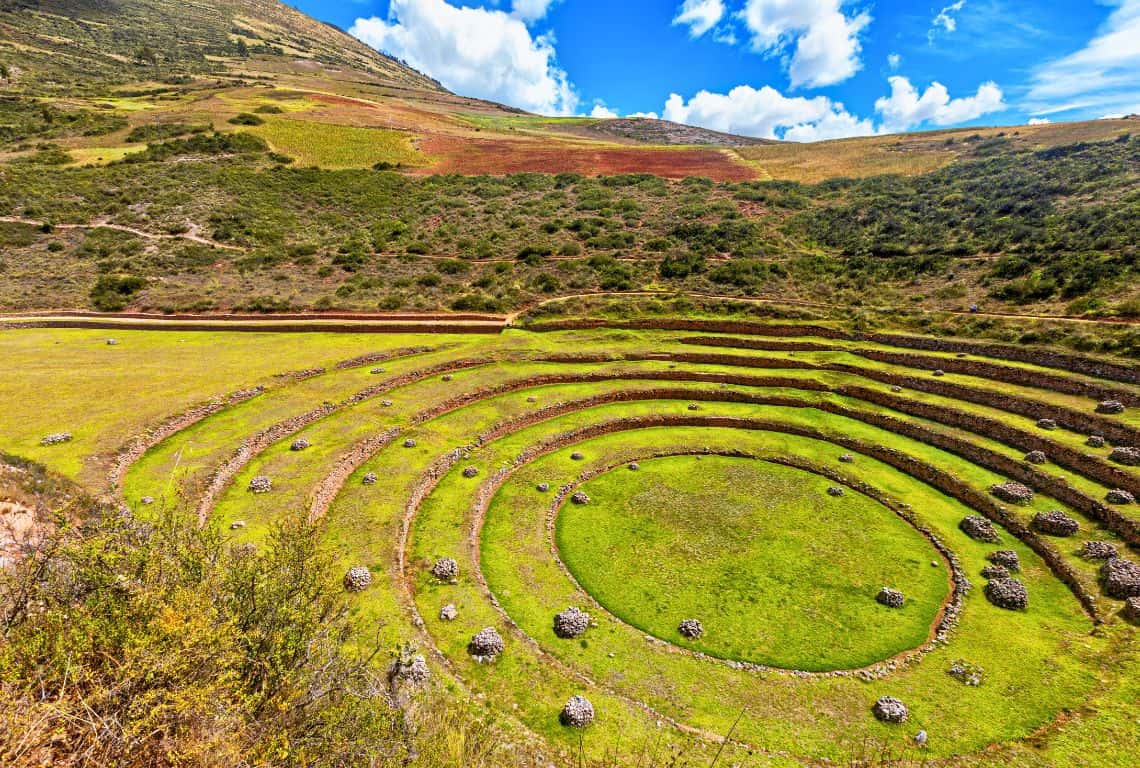
Moray Archaeological Site / Cusco to Moray: 4 Fascinating Discoveries at the Enigmatic Circular Terraces
Innovative Agricultural Practices
The circular terraces at Moray showcase the Inca’s remarkable understanding of agricultural practices and their ability to adapt to the challenging mountainous terrain.
Here are more details about the innovative agricultural practices observed at Moray:
- Microclimates within the Terraces
The terraces at Moray were constructed in a series of concentric circles, creating multiple levels of terraced fields.
Each terrace has a slightly different elevation, orientation, and depth, resulting in varying microclimates within the site. The temperature and humidity levels vary subtly from one terrace to another, allowing the Incas to simulate different growing conditions.
- Crop Diversification
The Incas took advantage of these varying microclimates to experiment with diverse crops. They cultivated a wide range of plants, including various types of maize (corn), quinoa, potatoes, medicinal herbs, and more.
Each crop was strategically placed in the terrace that provided the most suitable conditions for its growth.
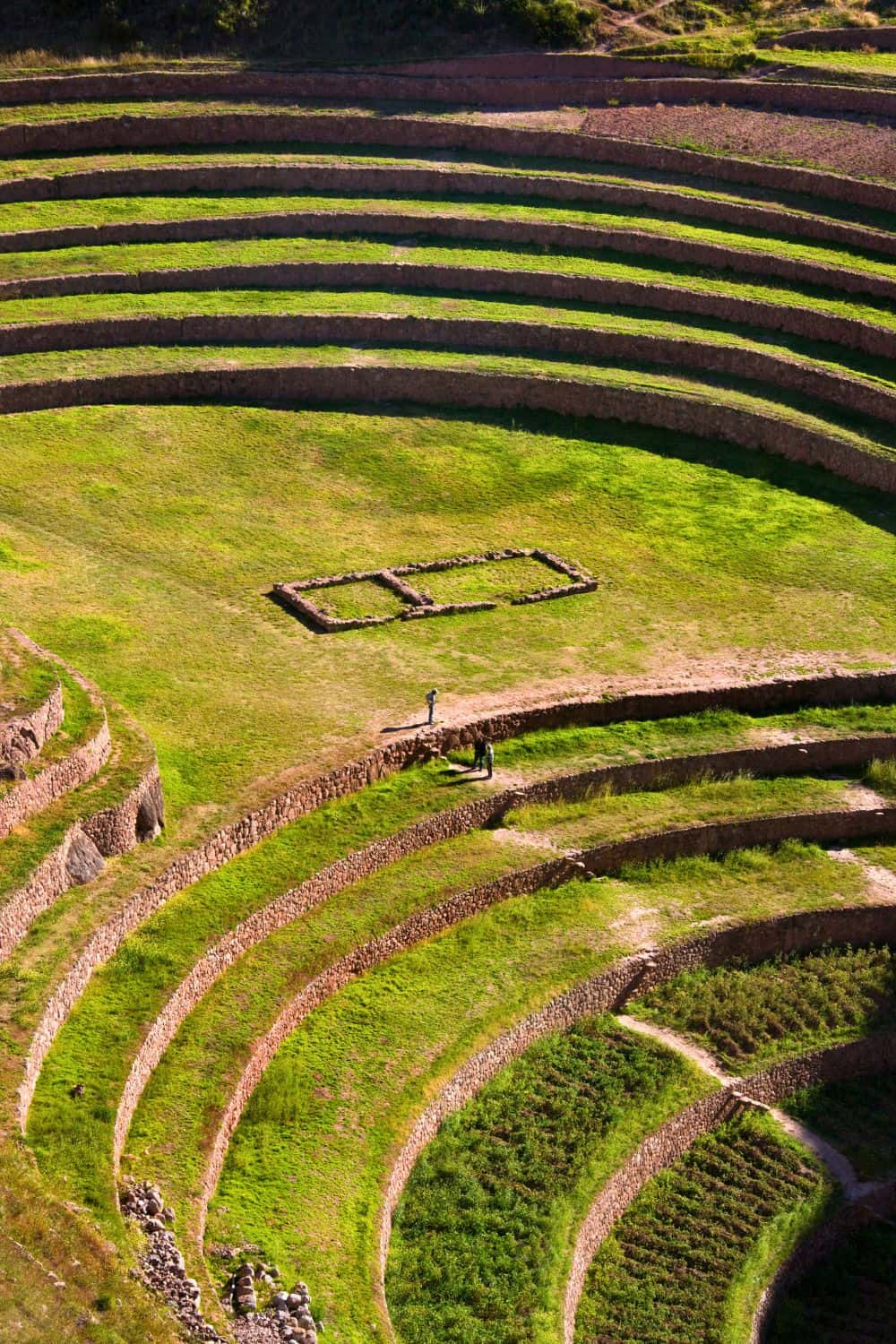
Moray Archaeological Site / Cusco to Moray: 4 Fascinating Discoveries at the Enigmatic Circular Terraces
- Temperature Regulation
The design of the circular terraces played a crucial role in regulating temperatures.
The higher terraces, exposed to more direct sunlight, provided warmer conditions, while the lower terraces, partially shaded by the upper levels, created cooler environments.
This temperature variation allowed the Incas to grow crops from different ecological zones within a single site.
- Wind Protection
The circular shape of the terraces also helped protect the crops from the strong winds prevalent in the Andean region.
The curvature of the terraces acted as a natural windbreak, reducing the impact of wind on the crops and preventing damage.
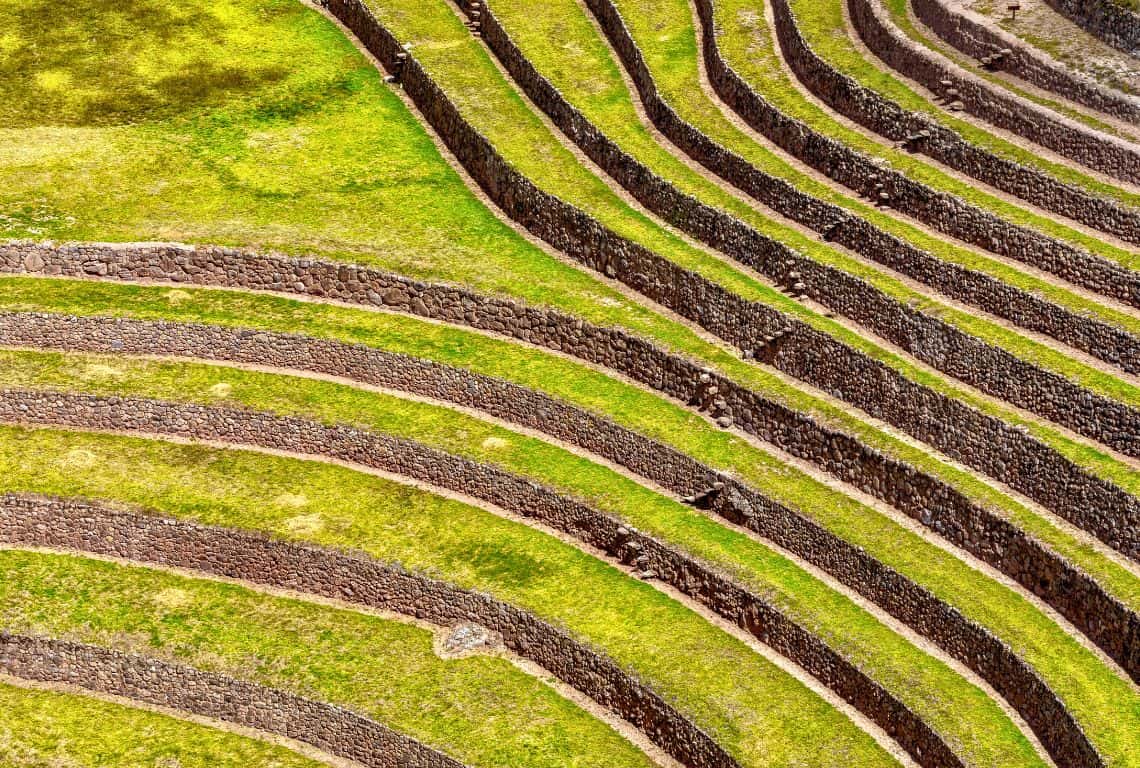
Moray Archaeological Site / Cusco to Moray: 4 Fascinating Discoveries at the Enigmatic Circular Terraces
- Water Management
Efficient water management was essential for successful agriculture at Moray. The Incas developed an intricate irrigation system to channel water throughout the terraces.
Each terrace had its own drainage system to prevent waterlogging and erosion. The water flowed from the higher terraces to the lower ones, ensuring an adequate water supply to each level.
- Agricultural Experimentation
Moray is believed to have served as an agricultural laboratory for the Incas.
By experimenting with different crops and growing techniques, they aimed to optimize food production and increase crop yields. The knowledge gained from these experiments contributed to the Inca’s agricultural success and their ability to sustain large populations in the Andean highlands.
Engineering Marvels
The engineering feats demonstrated in the construction of the circular terraces at Moray highlight the incredible skills and knowledge possessed by the Incas.
- Stone Masonry
The Incas were renowned for their mastery of stone masonry, and this expertise is evident in the construction of the circular terraces.
The stones used in the terraces were carefully shaped and fit together with remarkable precision. The joints between the stones are so tight that even today, it is challenging to slide a piece of paper between them.
This meticulous stonework showcases the Inca’s advanced knowledge of cutting, shaping, and fitting stones.
- Drainage Systems
One of the impressive engineering features of the circular terraces is the efficient drainage system. The Incas understood the importance of proper water management to prevent erosion and waterlogging.
Each terrace was equipped with a sophisticated drainage network. The walls of the terraces were designed with small gaps that allowed excess water to flow out, preventing damage to the crops and maintaining the structural integrity of the terraces.
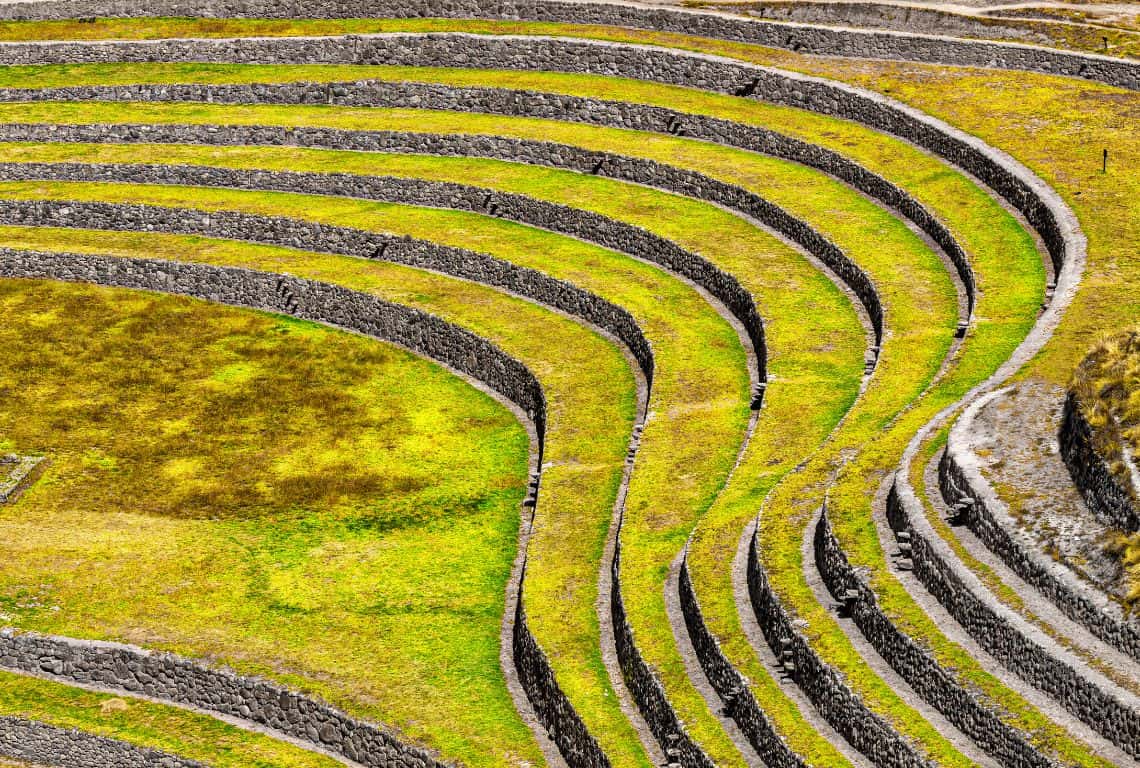
Moray Archaeological Site / Cusco to Moray: 4 Fascinating Discoveries at the Enigmatic Circular Terraces
- Water Supply
Ensuring a reliable water supply for irrigation was crucial for the success of agriculture at Moray.
The Incas ingeniously managed water sources to supply the terraces. Springs and natural streams were tapped into, and canals were constructed to direct water to the terraces as needed.
The precise control of water distribution allowed for optimal irrigation, supporting the growth of various crops in different sections of the terraces.
- Earthquake Resistance
The circular terraces at Moray were built to withstand seismic activity, which is common in the region. The Incas employed construction techniques that provided stability and resilience.
The terraces were constructed on a solid foundation, and the walls were built with a slight inward tilt to enhance their stability during earthquakes.
The thoughtful design and engineering ensured that the terraces endured natural disasters over the centuries.
- Alignments with Astronomical Phenomena
In addition to their agricultural and engineering prowess, the Incas incorporated astronomical alignments into their construction.
Some features of the circular terraces align with solstices and equinoxes, indicating the Inca’s knowledge and integration of celestial observations into their architectural planning.
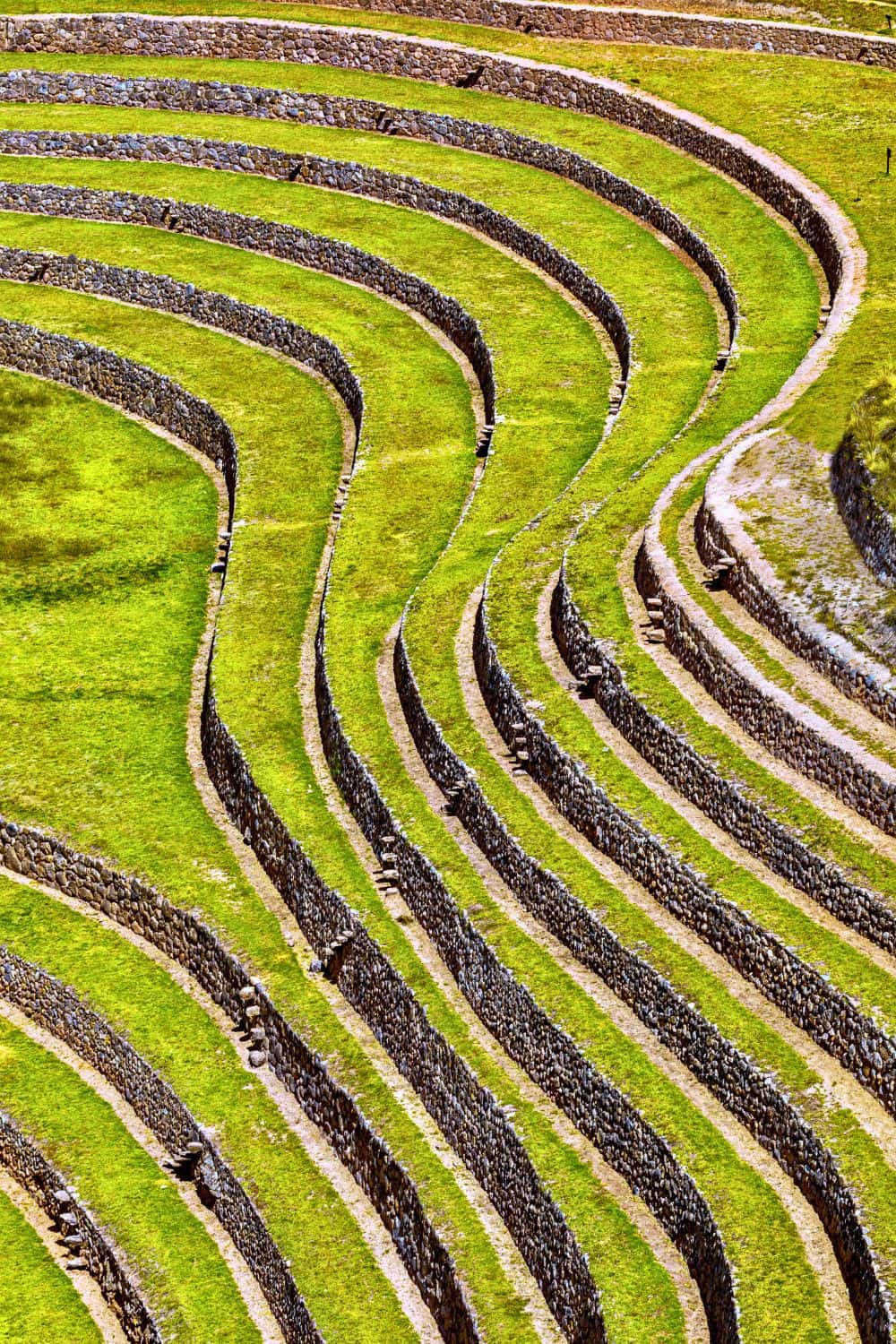
Moray Archaeological Site / Cusco to Moray: 4 Fascinating Discoveries at the Enigmatic Circular Terraces
Historical Significance
Moray’s historical significance extends beyond its architectural marvels. Here are more details about the historical importance of Moray and its connection to the Inca civilization:
- Agricultural Experimentation
Moray served as a center for agricultural experimentation for the Incas. The circular terraces were not merely ornamental structures but played a vital role in the Inca’s agricultural practices. They allowed the Incas to test and refine their agricultural techniques, adapt crops to different altitudes and microclimates, and develop sustainable farming methods.
The knowledge gained from these experiments contributed to the Inca’s ability to sustain their empire and support their growing population.
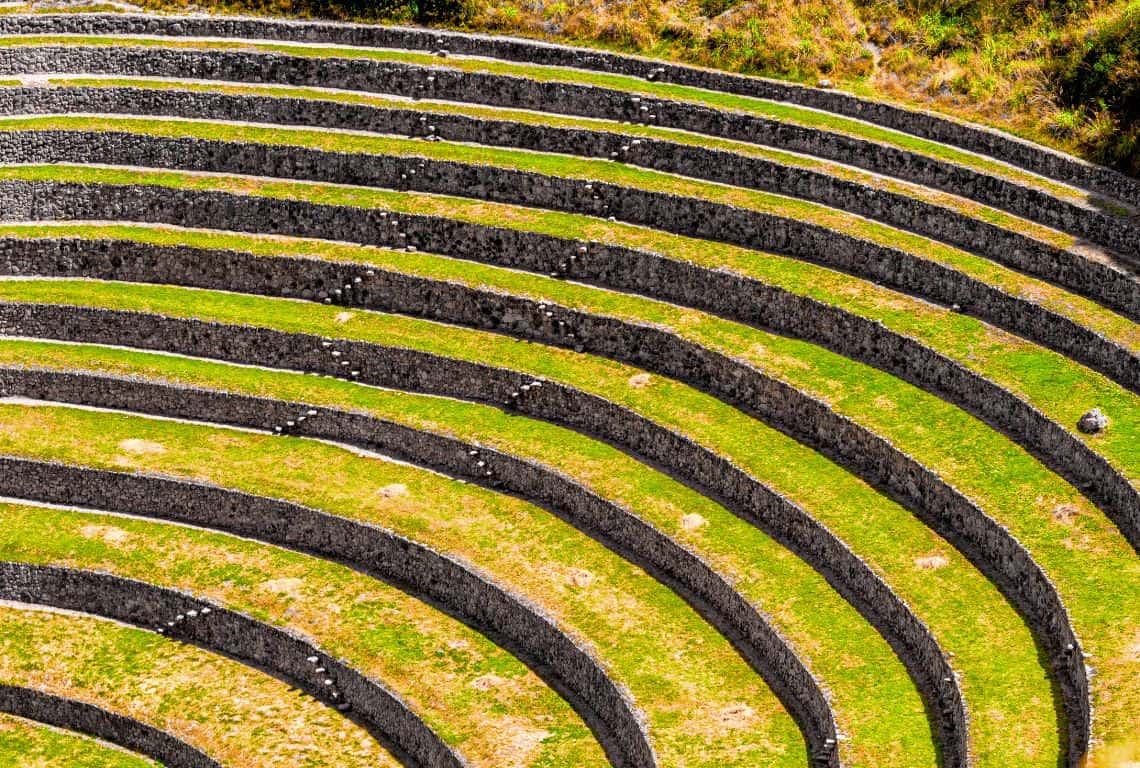
Moray Archaeological Site / Cusco to Moray: 4 Fascinating Discoveries at the Enigmatic Circular Terraces
- Inca Social Structure and Economy
The success of Inca society was closely tied to agricultural productivity. Moray’s agricultural experiments at the circular terraces influenced the Inca social structure and economy. The surplus food produced through innovative techniques helped support the expanding Inca Empire and its administrative centers, including Cusco. The ability to cultivate a variety of crops in different terraces contributed to the economic stability and trade networks of the Incas.
- Spiritual and Ritualistic Significance
The Incas had a deep spiritual connection with the land, and agriculture played a central role in their religious beliefs and rituals.
Moray’s circular terraces were likely regarded as sacred spaces due to their agricultural significance.
The Incas may have performed rituals and ceremonies at Moray to honor the fertility of the land and seek blessings for bountiful harvests.
- Architectural Symbolism
The circular terraces at Moray are not only functional but also symbolize the Inca’s understanding of the harmony between nature and human intervention. The circular shape may represent the Inca’s reverence for the sun, moon, and other celestial bodies, which played integral roles in their cosmology.
Breathtaking Scenery
Moray’s location amidst the Peruvian landscape is an unforgettable visual experience.
As you approach Moray, you will be greeted by the sight of valleys stretching out before you. The terraces blend harmoniously with the natural landscape.
Moray is encircled by majestic mountains that serve as a dramatic backdrop to the circular terraces. Towering peaks rise in the distance, creating a sense of grandeur and providing a breathtaking panorama.
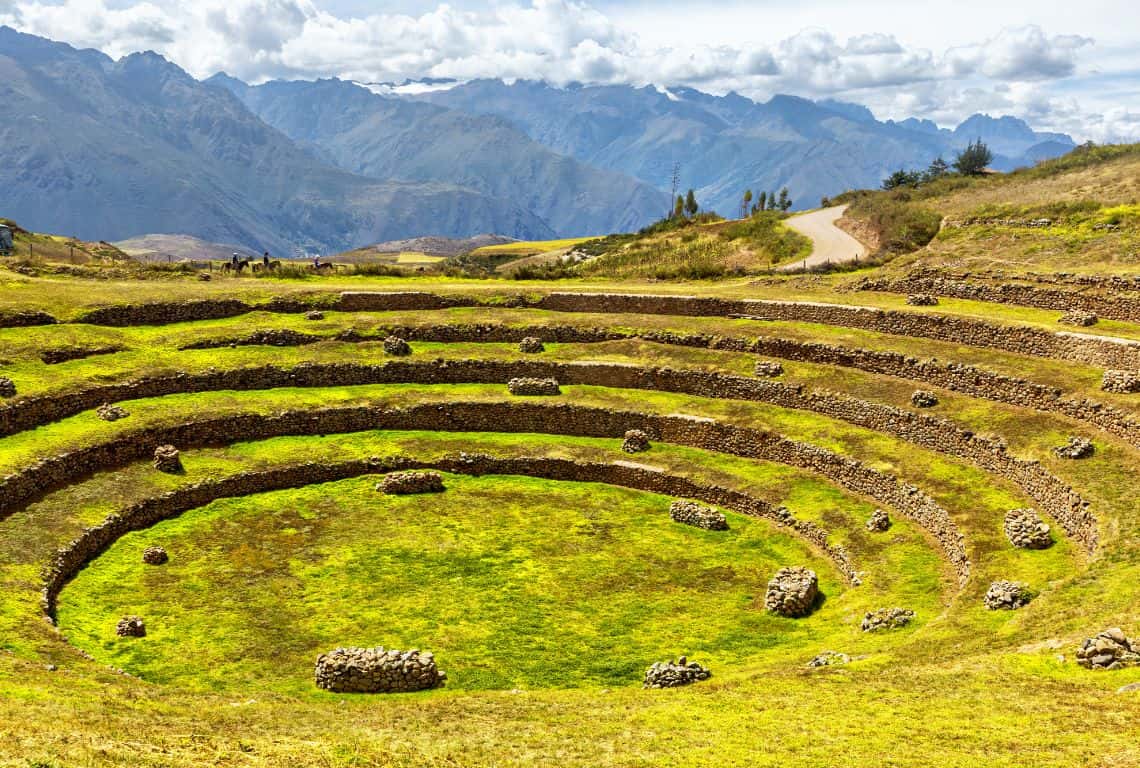
Moray Archaeological Site / Cusco to Moray: 4 Fascinating Discoveries at the Enigmatic Circular Terraces
Intrepid Scout's Tips for Visiting Moray
- Plan Sufficient Time: Allocate ample time to explore Moray. The site offers various terraces and viewpoints to explore, so plan for at least a couple of hours to immerse yourself in the experience.
- Wear Comfortable Clothing: Ensure you wear comfortable clothing and sturdy footwear suitable for walking and exploring terraces.
- Bring Sun Protection: The Peruvian sun can be strong, especially at high altitudes. Remember to bring sunscreen, a hat, sunglasses, and any other sun protection you may need to stay comfortable and protected during your visit.
- Stay Hydrated: It is important to stay hydrated, especially at higher elevations. Carry a bottle of water with you and take regular sips to keep yourself hydrated throughout your time at Moray.
- Combine with Other Attractions: Moray is located in close proximity to other notable attractions such as the Maras Salt Mines and the Sacred Valley. Consider combining your visit to Moray with these sites to make the most of your time in the region.
You Might Also Like:
What to Pack for Peru: 14 Detailed Essentials for an Adventure-Filled Exploration
Cusco to Ollantaytambo: 15 Fascinating Things to Discover at Peru’s Ancient Fortress
BEST TIME to VISIT MACHU PICCHU (Top #1 Month for Ultimate Adventure)
Best SELF-GUIDED MACHU PICCHU TOUR (Explore 11 Marvels of Inca Citadel)
How to See the Mesmerizing SUNRISE at MACHU PICCHU (9 Steps to Witness the Magic)
9 Best PHOTOGRAPHY LOCATIONS at MACHU PICCHU (+Useful Photo Tips)
9 Top THINGS to DO at MACHU PICCHU (Unveiling the Enchanted City of the Incas)
How to Reach Machu Picchu Without Hiking (2 Easy Steps!)
Hiking to MACHU PICCHU from AGUAS CALIENTES in 4 Easy Steps
7 Fun and Cool THINGS to DO in AGUAS CALIENTES (Besides Machu Picchu)
Now, It Is Your Turn, I Would Like to Hear Back from You!
Are you planning a trip to Peru?
Please let me know! Drop me a quick comment right below!
Click on any of the images below to get inspired and to help you with the planning process for your trip to Peru!
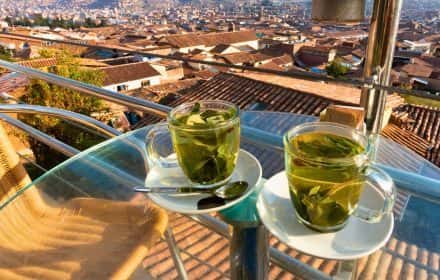
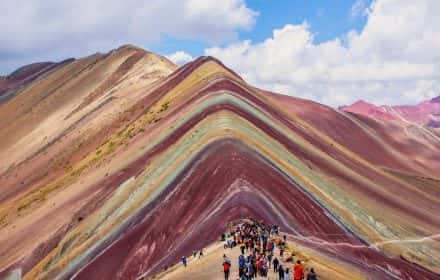
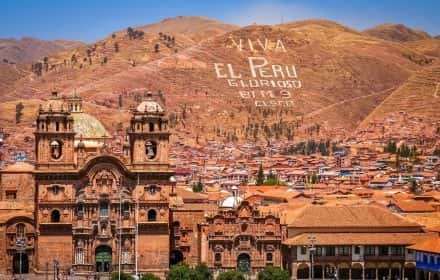
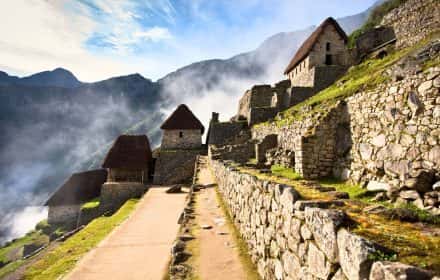
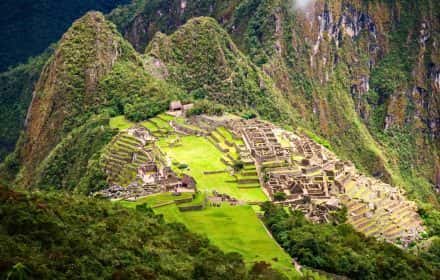
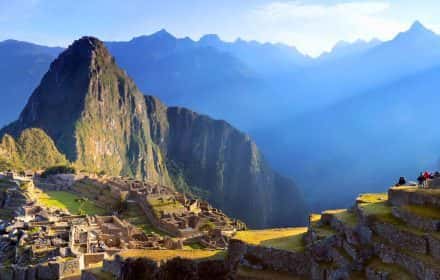
Comments:
2 thoughts on “From Cusco to Moray: 4 Fascinating Discoveries at the Enigmatic Circular Terraces”
I find the circular terraces at Moray, Peru fascinating. The temperature is much colder at the bottom terraces. I believe that one of the reasons the terraces were built was to have the humidity spiral downward, getting colder, then condensing and therefore, watering the crops. I know that rain also watered them, there were downward spouts built to run the excess water off of the terraces to a water basin at the bottom of the terrace with a canal attached to carry the water away to become accessible for drinking water. I wish there were more circular terraces built in the world to aid in food production and a plentiful water supply.
That’s a really interesting perspective on the circular terraces at Moray, Peru! It’s fascinating to think about the intricate engineering and agricultural techniques that were employed by ancient civilizations. Your idea about using circular terraces as a way to manipulate humidity and water for crop cultivation is quite innovative. It’s amazing how these ancient structures still inspire ideas for addressing modern challenges.
Expanding on your idea, the concept of circular terraces for sustainable agriculture and water management is indeed compelling. Implementing such techniques in different parts of the world could potentially contribute to food security and water conservation, especially in regions with challenging climates.
It’s always exciting to explore how ancient wisdom can be applied in contemporary contexts to address pressing issues. Your curiosity and creativity in connecting the past with the present are commendable. If you have any more thoughts or ideas on this topic, I’d love to hear them!